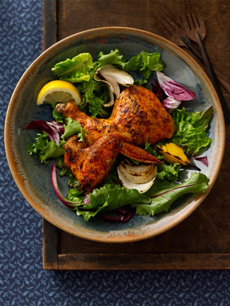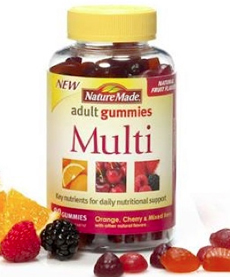|
While our “day job” is to try lots of specialty foods and cook and bake alluring recipes, we aim to make the right choices when we’re not working.
If we’ve been heavy on the healthful eating tips lately, it’s because we’re struggling even harder after the onslaught of Valentine chocolate.
So today we’re passing along five Mediterranean Diet tips, adapted from an original article by Ashley Lauren Samsa on Care2.com.
For about 30 years, nutritionists and other healthcare professionals have encouraged Americans to follow the “Mediterranean Diet,” a heart-healthy eating plan that emphasizes fruits, vegetables, whole grains, beans, nuts and seeds, and healthy fats.
Substituting olive oil for butter, fish for meat, vegetables for starch, fat-free dairy products and a limit on carbohydrates is said to explain why Mediterranean dwellers have a lower incidence of heart disease. Here’s more from the Mayo Clinic.
What if you’re young, healthy and have no family history of heart disease? Hedge your bets. You don’t know how your system will change as you age…and even if your kin live to 100, you may have a partner and kids to plan for.
|
|

Olive oil can do whatever butter can do, and it’s better for you. Photo
courtesy FlavorYourLife.com. |
1. SUBSTITUTE OLIVE OIL FOR BUTTER
A few decades ago, journalists seized on the fat in the American diet as a no-no. A cascade of media proliferated and a generation of people grew up thinking fat is bad.
That’s not the whole truth. Saturated fat (cholesterol and other sources) is bad. Monounsaturated fats (avocado oil, canola oil, olive oil, peanut oil and others) is good for you. The government recommends two tablespoons a day as part of a heart-healthy diet.
Here’s more on the good fats. Here are tricks to cut down on cholesterol:
Sauté in heart-healthy olive oil, not valve-clogging cholesterol (butter or lard).
Replace the butter in sauces, glazes and marinades with oil. Look at adding a bit of highly flavored oils, like sesame oil and nut oil.
Cook your eggs in oil. We grew up on butter-fried or scrambled eggs in butter every morning—it was what our mother preferred. We love the taste of butter, but it was easy to make the switch.
Use olive oil instead of other salad dressings. Make your own vinaigrette with a 3:1 ratio of olive oil to vinegar. Use a quality vinegar—we prefer flavored vinegar or balsamic. We often add a pinch of dried mustard, which helps to keep the emulsion. You can add a small amount of Dijon or honey mustard, or a small amount of honey or the better-for-you agave nectar.
Mash potatoes in plain or flavored olive oil. Basil olive oil is our favorite for this!
Use olive oil as a condiment instead of a pat of butter.
Instead of butter with bread, serve olive oil, like Mediterranean restaurants do. A delicious, full-flavored oil is just fine served plain. If your olive oil is on the bland side, add spices add/or herbs.
Check out Italian olive oil cake recipes—they’re delicious (especially with fresh basil and rosemary—seriously!).
Get past “generic” olive oil. It’s fine for sautéing, but doesn’t add good flavor for vinaigrette and condiment use. If you can afford better oils, go for them. The ones we use are so delicious, we relish the two tablespoons we drink at breakfast each day.
Seek out an olive oil bar and taste the different varieties; also try flavored olive oils. If someone asks what you want for a birthday gift, ask for a bottle of basil olive oil (or the flavor of your choice).
|

Grilled chicken atop a tasty salad. Photo
courtesy Just Bare. |
|
2. EAT YOUR PROTEINS ON A BED OF GREENS.
Get into the habit. Instead of a side salad, often an afterthought topped with too much dressing, plan for a salad-based meal.
Slice the beef, chicken, lamb, pork or other protein and serve it atop a salad of mixed dark, leafy greens and bright colored veggies, lightly dressed with olive oil, vinegar and/or lemon juice. Slicing the meat can also help to cut down on portion size. The recommended size is three ounces—the “deck of cards”—which seems very meager. It can look like more when it’s sliced, diced and added to vegetables or grains.
“Greens” should always include two colors in addition to green. It’s easy to add red cherry tomatoes, bell pepper, or radiccho; or yellow/orange cherry tomatoes, bell peppers or summer squash.
Alternatively, dice the meat into a chopped salad tossed with homemade vinaigrette. The flavors blend so much better, it’s no surprise that chopped salad is a menu favorite.
Place an entire fish filet on top of the salad.
Instead a sandwich of grilled chicken or steak, use a lettuce wrap.
|
|
With this switch, you both reduce your carb intake and increase your vegetable intake. As an added bonus, you are intake more olive oil, too.
3. REPLACE MEAT WITH FISH & VEGETARIAN MEALS
Not only is the cholesterol in meat bad for you; breeding animals is the single largest cause of greenhouse gas. It also is responsible for pollution of the water tables and destruction of the rainforest to ranch cattle and grow feed for them. Not only are we a society of carnivores; as third world countries grow more affluent, they want more meat. The environmental impact is growing bigger each year, despite educational efforts and interest in sustainability.
What can a meat lover do? Start by replacing two meals a week with fish, seafood or vegetarian dishes. There are many vegetarian and vegan favorites, from pasta primavera to bean-based chili and stir-frys. Pick up a cookbook of tempting vegetarian and vegan recipes, or look at the many online. Don’t be swayed by a preconception of vegan as “weird.” In the hands of good cooks, the food is so good you don’t notice there are no animal-derived ingredients.
Fish are generally high in omega-3 fatty acids, another very powerful ingredient. This easy switch will keep you healthier as it helps the planet.
4. TRY VEGGIE SMOOTHIES THAT TASTE LIKE FRUIT
If you simply don’t like the taste of vegetables, blend them into sweet smoothies. Toss vegetables like carrots, spinach, kale or celery into a blender. Add a liquid like milk or fruit juice, along with yogurt or a banana and some nut butter (almond butter and sunflower seed butter are nice alternatives to PB). Flavor with cinnamon and honey.
All you’ll taste are the banana, cinnamon and honey, but you’ll be getting all the benefits of the veggies.
Smoothies can be made in advance and frozen. Toss one in your lunch bag in the morning to keep your food cold while it thaws, and it’ll be ready to drink by noon. (By the way, this is a great way to trick kids into eating more vegetables.)
And…stay tuned for our Top Pick Of The Week, Veggie Blend-Ins from Green Giant. We couldn’t believe that a chocolate cupcake made with added spinach purée resulted in…a really delicious chocolate cupcake!
5. SNACK SMART
If you’re not the type to grab a banana or other piece of fruit, you’ve got choices that give you “snack satisfaction”:
Popcorn, baby carrots or mixed crudités with lowfat or nonfat dip, Bare Fruit apple chips (our favorite—so sweet yet there’s no added sweetener) and dried fruit and nut mixes are easy and very tasty. There are books and websites of “healthy snacks.”
As a fun challenge, print out a calendar page and research a different healthy snack for every day. It’s not as daunting as you think: garlic popcorn and jalapeño popcorn are three separate snack ideas.
Here are some of our favorite healthy snacks for the office. Send us your favorite better-for-you snacks.
|
|








